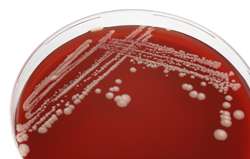Yeast models of cell death and survival mechanisms

European scientists investigated differences in the genomes of various distantly-related yeast and their effects on cell survival. Results may provide insight into cell death induced by free radicals.
Most of us have heard of the health benefits of nutritional sources high in antioxidants such as vitamin C, vitamin E and beta-carotene. Antioxidants remove oxidants and free radicals, highly reactive molecules produced naturally by the body or introduced to the body by toxins such as tobacco smoke or ultraviolet (UV) light.
Oxidative stress induced by high levels of such reactive oxygen species (ROS) can induce changes in the cell cycle and DNA. It has also been linked to a variety of disease processes and ageing.
European researchers sought to gain insight into the relationship between oxidative stress and cell cycle regulation with EU funding of the Oxicellcycle project. Scientists chose the powerful yet simple single-cell fission yeast model. Fission yeast are characterised by cell division and replication mechanisms similar to those of multi-cellular organisms.
In particular, they studied reproductive isolation mechanisms (barriers preventing two individuals of different species from producing offspring) across different wild forms of specific fission yeast, Schizosaccharomyces pombe (S. pombe). Investigators applied a wide range of genetics techniques to evaluate genome-based effects on spore survival.
Preliminary studies identifying genetic differences among distantly related strains of S. pombe may eventually shed light on certain cell cycle-regulated genes and their relationship to cell survival.
Provided by CORDIS
















